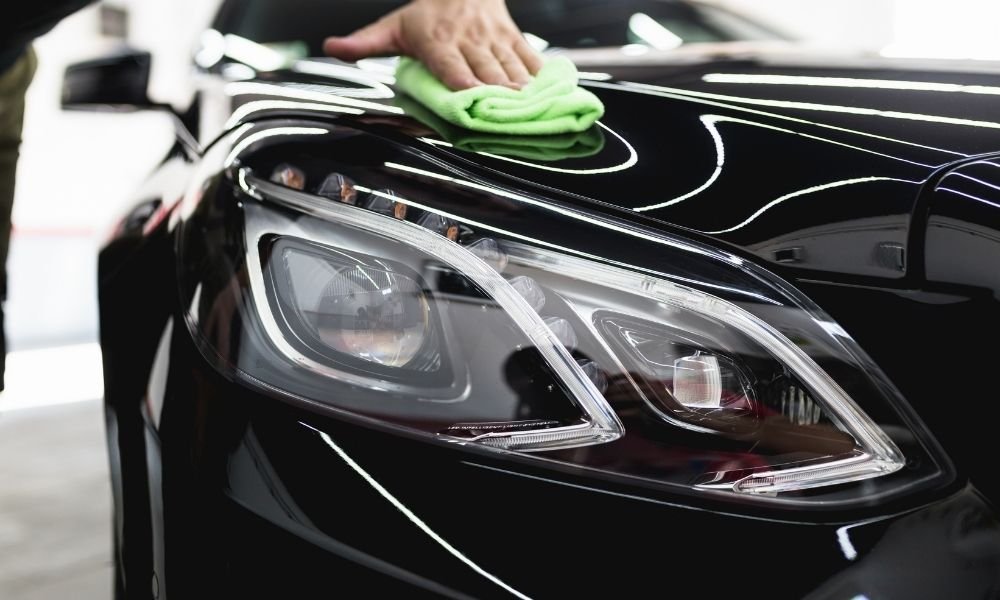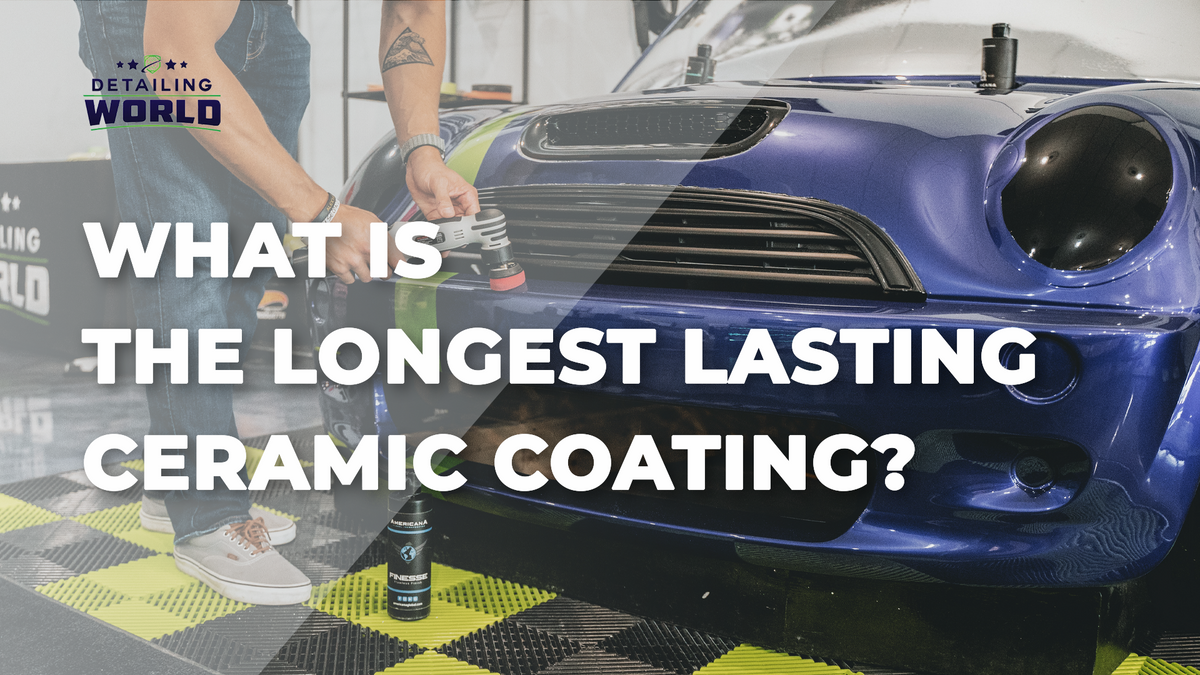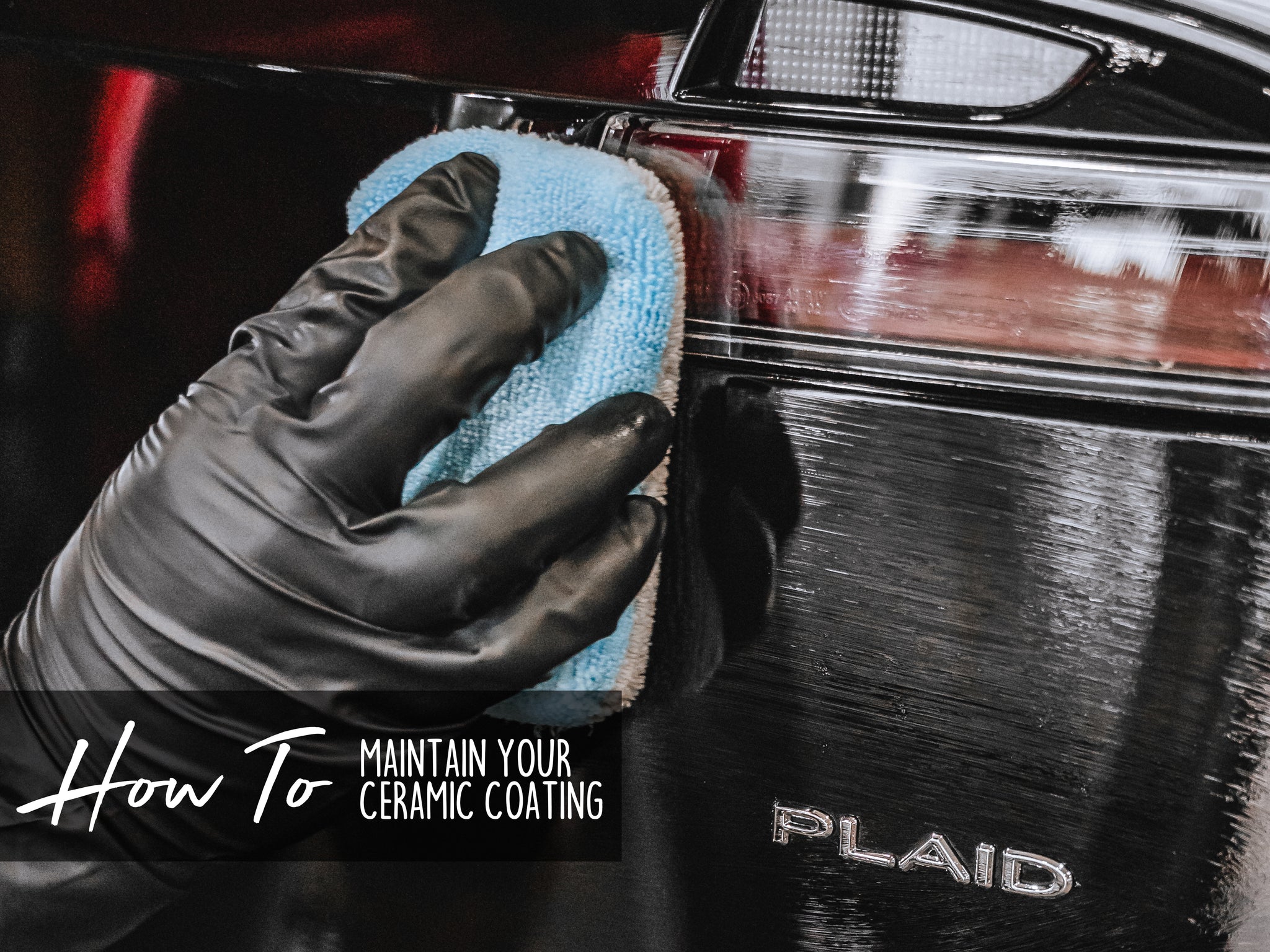Ceramic Coating vs. Conventional Wax: Which Provides Better Long-Term Security?
The argument in between ceramic layers and conventional wax for automobile protection has gathered considerable attention among vehicle fanatics and professionals alike. While both satisfy of guarding paint, their differences in sturdiness, application, and lasting upkeep prices may influence a consumer's selection. Ceramic coatings boast exceptional durability and resistance to environmental variables, yet the intricacy of their application questions concerning ease of access and practicality. As we discover these contrasting alternatives, it becomes vital to take into consideration not just the prompt benefits but additionally the ramifications for lorry treatment in time.
Introduction of Ceramic Finishing
Ceramic finishing has actually acquired considerable popularity amongst auto fanatics and detailers alike as a result of its sophisticated safety high qualities. This cutting-edge modern technology is made to produce a durable, hydrophobic guard over a vehicle's paint surface, considerably boosting its resistance to environmental pollutants such as dust, UV rays, and chemical stains. Unlike standard wax, which gives a temporary layer of security, ceramic layers bond at a molecular degree with the paint, using resilient resilience-- frequently prolonging past 2 years with appropriate maintenance.
The application process involves thorough prep work of the lorry's surface, consisting of cleaning and brightening to make sure optimal adhesion. As soon as applied, the layer cures to create a robust layer that not just adds depth and gloss to the paint however likewise simplifies maintenance. With its hydrophobic residential properties, ceramic finish allows water and dirt to slide off more easily, minimizing the frequency of cleans and decreasing the danger of swirl marks.
Moreover, ceramic finishings are available in various formulations, permitting individuals to select items customized to their specific needs and choices. Overall, ceramic finishing stands for a considerable improvement in paint defense technology, supplying remarkable performance contrasted to traditional options.
Overview of Typical Wax
Typically considered as a staple in automotive treatment, wax functions as a preferred choice for those seeking an uncomplicated method to boost and protect their car's paint - ceramic coating. Automotive wax commonly consists of natural ingredients, such as carnauba, or artificial substances, created to develop a safety layer externally of the paint. This layer not just improves the lorry's gloss and beam but additionally offers a barrier against ecological contaminants
The application of wax is generally straightforward, making it easily accessible for both professionals and DIY enthusiasts. When used, wax requires a curing period, after which it solidifies to develop a safety covering.
Nonetheless, while wax is reliable for improving the visual charm of a vehicle, it is very important to note that the defense it provides may necessitate more frequent reapplication contrasted to different items, such as ceramic layers. Generally, typical wax continues to be a preferred option for those focusing on simplicity of usage and instant visual renovation.
Durability and Long Life Comparison
While both ceramic finishings and conventional wax deal safety advantages for automobile paint, their longevity and durability vary dramatically. Conventional wax, commonly made from natural carnauba or artificial polymers, generally offers a safety layer that lasts around three to 6 months. This fairly brief life expectancy necessitates regular reapplication to preserve ideal protection.
In comparison, ceramic coverings are engineered from innovative nanotechnology, forming a covalent bond with the paint surface area. This causes a robust, hydrophobic layer that can sustain for two here to 5 years, depending upon the item and ecological problems. The exceptional sturdiness of ceramic layers is attributed to their chemical framework, which offers improved resistance to scrapes, UV rays, and oxidation.

Security Versus Ecological Factors
Safeguarding a vehicle's paint from ecological factors is essential for maintaining her explanation its look and worth with time. Autos are regularly subjected to a range of elements, consisting of UV rays, bird droppings, tree sap, acid rainfall, and roadway grime, all of which can jeopardize the integrity of the paintwork.
Ceramic finishings offer a robust protection against these environmental assailants. Unlike typical wax, which can degrade promptly under UV exposure, ceramic coatings create a durable, hydrophobic layer that stands up to the damaging results of sunlight and toxic wastes. This advanced innovation creates a chemical bond with the automobile's surface, offering exceptional protection that lasts for several years, also in extreme conditions.
In comparison, ceramic coverings preserve their protective qualities longer, considerably lowering the threat of paint damage and guaranteeing that the automobile retains its visual charm. As a result, ceramic coatings are increasingly recognized as the premium option for long-lasting defense versus environmental factors.
Application and Upkeep Differences
The techniques of application and subsequent maintenance for ceramic coatings and standard wax vary substantially, impacting the total user experience and performance of each product. Ceramic coatings need an even more elaborate application procedure, generally entailing surface prep work that consists of cleaning, decontaminating, and polishing the lorry. As soon as the surface is all set, the ceramic covering is applied in a controlled environment, commonly needing professional expertise to guarantee proper treating and bonding to the paint.

While both products enhance vehicle look, the longer-lasting protection offered by ceramic finishings might validate their initial financial investment, regardless of the even more requiring application procedure. On the other hand, standard wax stays a preferred selection for those seeking an easier, albeit temporary, option.

Conclusion
To conclude, ceramic finishes show substantial benefits over conventional wax in regards to durability and environmental protection. With a life-span prolonging 2 to 5 years and exceptional resistance to UV rays, dirt, and chemical stains, ceramic blog coatings offer a more effective solution for lasting car maintenance. The application procedure might need professional proficiency, the resulting cost savings and decreased regularity of reapplication highlight the value of ceramic coatings for those looking for optimal lorry protection.
The discussion between ceramic coverings and standard wax for automobile protection has actually garnered substantial attention amongst automobile fanatics and experts alike. Unlike traditional wax, which provides a temporary layer of security, ceramic coverings bond at a molecular degree with the paint, offering resilient toughness-- frequently expanding beyond 2 years with proper maintenance.
While both ceramic layers and standard wax deal protective advantages for automobile paint, their resilience and long life differ substantially. For car fanatics looking for lasting protection, ceramic finishes offer a compelling benefit over conventional wax items.
In verdict, ceramic coverings demonstrate significant advantages over standard wax in terms of durability and environmental security.